Birds of Our Observations
Let yourself be inspired by our fascinating observations from the past years and discover the diverse world of nature. Here, we regularly present a compilation of our latest discoveries and observations.
If you are looking for a specific bird, you can find it using the search field:

Canada goose (Branta canadensis)
The Canada goose (Branta canadensis) belongs to the family of waterfowl (Anatidae) and is the most widespread goose worldwide. Its original habitat is in North America, where it is a characteristic bird of lowlands and breeds at inland lakes in prairie and agricultural areas. Its migration in characteristic V-formation to wintering grounds and back to breeding sites in the spring symbolizes in

Common reed bunting (Emberiza schoeniclus)
The common reed bunting (Emberiza schoeniclus), also known as the reed sparrow, belongs to the family of buntings (Emberizidae) and is native to Europe, North Africa, and East Asia. It is only absent from some Mediterranean islands. The reed bunting is commonly found, especially in reed and sedge habitats. In Central Europe, it is a partial migrant, as most birds leave the region in October/November and return in February and March. During winter, the reed bunting resides in North Africa.
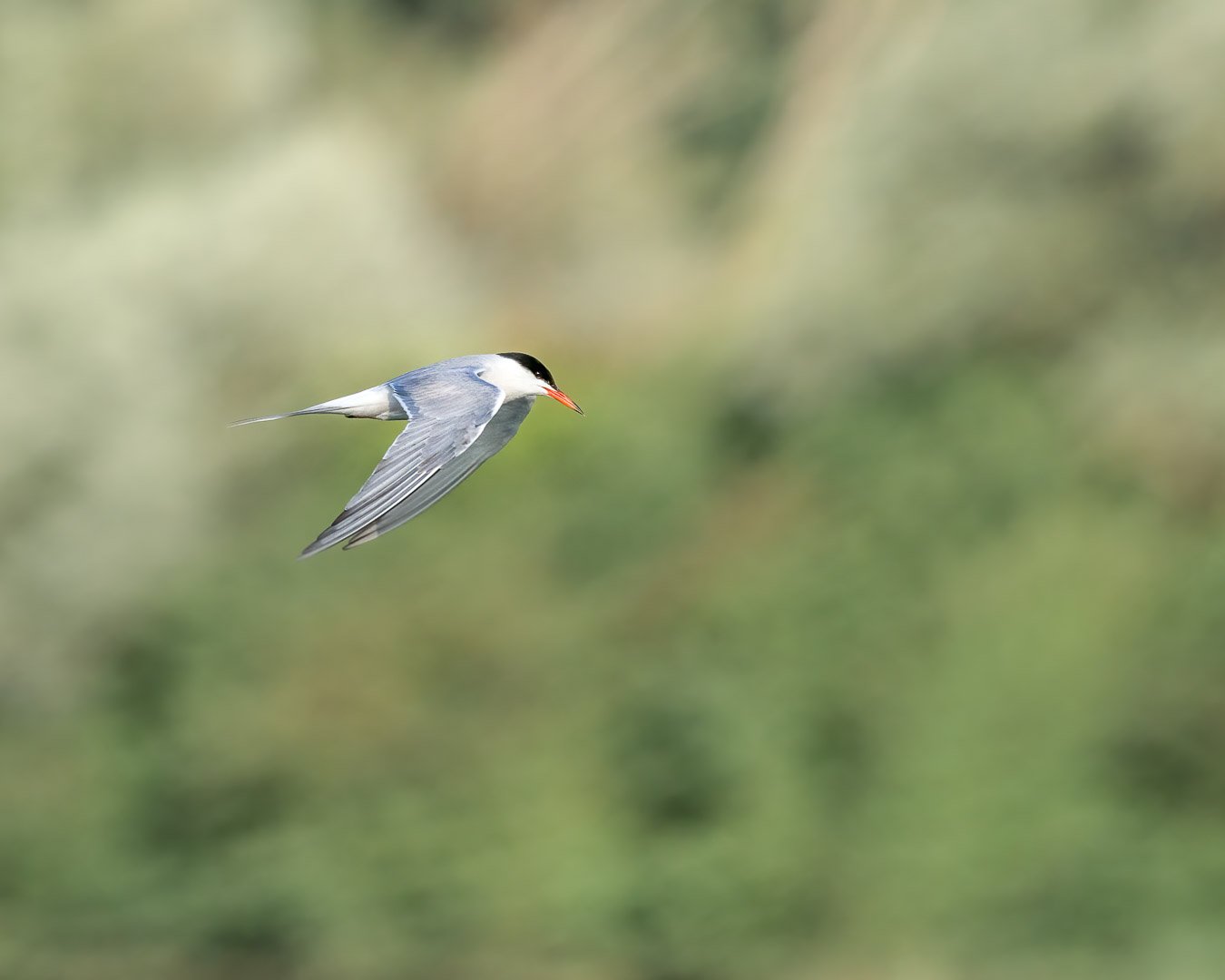
Common tern (Sterna hirundo)
The common tern (Sterna hirundo) belongs to the subfamily of terns (Sterninae) and is a widespread, although not very common, breeding and summer bird species in Central Europe. During migration periods, many migrating birds can also be observed in the Central European region. The common tern resembles the coastal tern but is

Eurasian hoopoe (Upupa epops)
The Eurasian hoopoe (Upupa epops) belongs to the hoopoe family (Upupidae), a bird family classified in the order Bucerotiformes along with the woodhoopoes (Phoeniculidae). The previous classification under the Coraciiformes order is no longer common. Depending on the scientific perspective, there are between five and ten subspecies, with African hoopoes, which were previously considered subspecies of Upupa epops, now regarded as separate species, except for the subspecies found in Egypt.

Cuckoo (Cuculus canorus)
The cuckoo (Cuculus canorus) is a member of the Cuculiformes and includes birds such as the roadrunners, anis, and coucals. This species is a widespread summer migrant to Europe and Asia, and it winters in Africa. The cuckoo is a brood parasite, which means it lays its eggs in the nests of other bird species, specifically targeting hosts like the dunnock, meadow pipit, and others.

Osprey (Pandion haliaetus)
The Osprey, scientifically known as Pandion haliaetus, is a bird of prey and belongs to its own monotypic family Pandionidae due to unique characteristics. Although the Osprey is distributed almost worldwide, it is also found in Central Europe. It should be noted that the Osprey does not belong to the true eagles. Ospreys are slender, medium-sized raptors with long wings. They are known for their ability to catch fish, which they hunt from lakes, rivers, and coastal waters. Ospreys have a distinctive appearance with their white head, brownish upperparts, and white underparts with dark spots. They also have striking yellow eyes and powerful talons to grasp their prey. Ospreys build large nests of sticks and twigs in tall trees or on rocky outcrops near water bodies. They are migratory birds and spend the winter in warmer regions before returning to their breeding grounds in spring.

European Robin (Erithacus rubecula)
The European Robin (Erithacus rubecula) belongs to the family of Old World flycatchers (Muscicapidae) and is native to North Africa, Europe, Anatolia, and Mediterranean islands. It mainly feeds on insects, small spiders, worms, and snails. The European Robin's song begins about an hour before sunrise and can be heard almost all year round until dusk. Due to its frequent sightings, appearance, and often short flight distance, the European Robin is
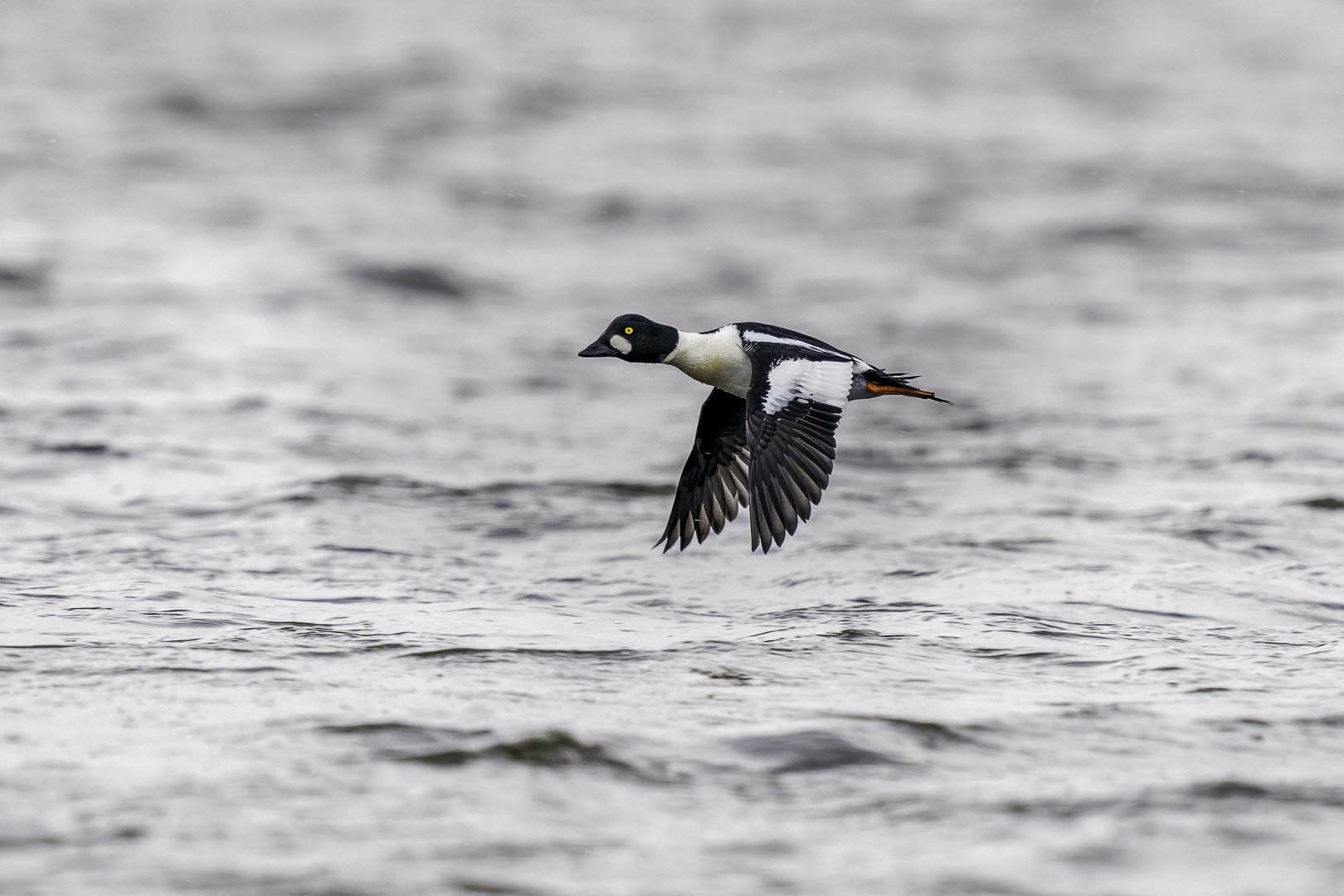
Common goldeneye (Bucephala clangula)
The common goldeneye (Bucephala clangula) belongs to the family of waterfowl (Anatidae) and is widely distributed across the Holarctic region, primarily in the northern coniferous forest zone. The stout appearance of the species is characterized by its short neck and relatively large head. There are two subspecies of the common goldeneye, which are distributed from Europe through Siberia to America. Due to its suitability for captive breeding, it is classified among the sea ducks.
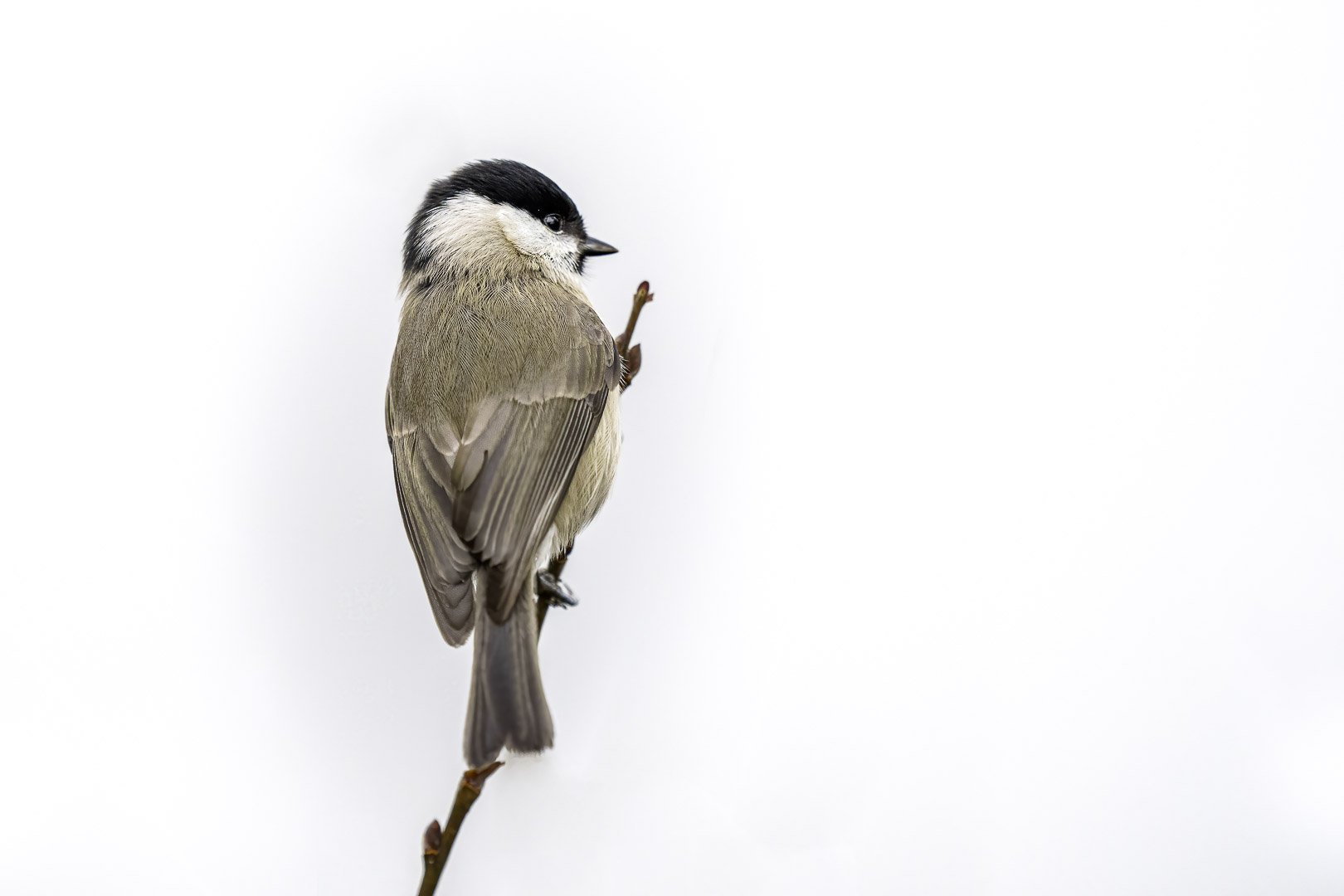
Marsh Tit (Poecile palustris)
The Marsh Tit (Poecile palustris) is a songbird from the tit family (Paridae) closely related to the willow tit and the coal tit. The Marsh Tit has a black crown and nape, pale cheeks, a brown back, and grayish-brown wings and tail. Between 8 and 11 subspecies are recognized. Due to its similarity to the willow tit, identification can be challenging, especially in areas where the two species overlap.

Eurasian siskin (Spinus spinus)
The Eurasian Siskin (Spinus spinus) is a small and sociable bird, a member of the finch family, found in forested areas throughout Europe and Euro-Siberia. Its diet consists mainly of various seeds, with a preference for alders and conifers. Males are characterized by their yellow face and breast, accompanied by a black cap, while females exhibit a more inconspicuous gray-striped pattern. These birds display a unique migration pattern, often venturing south in large numbers during
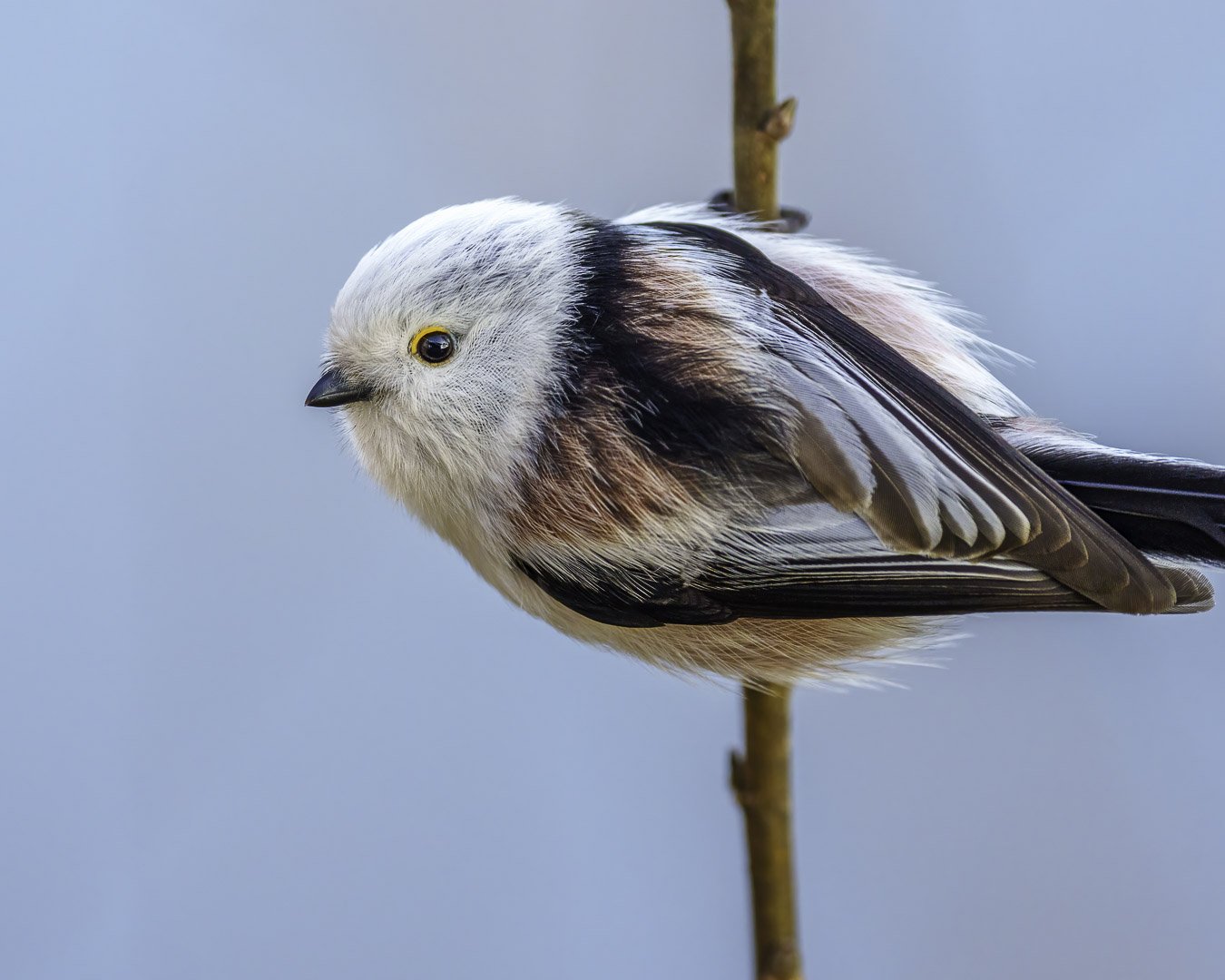
Long-tailed tit (Aegithalos caudatus)
The Long-tailed Tit (Aegithalos caudatus) is a small passerine bird from the family of long-tailed tits (Aegithalidae), named after its long tail, which allows it to balance precisely while searching for food on fine branches. It prefers light forests, forest edges, and parks with dense undergrowth as
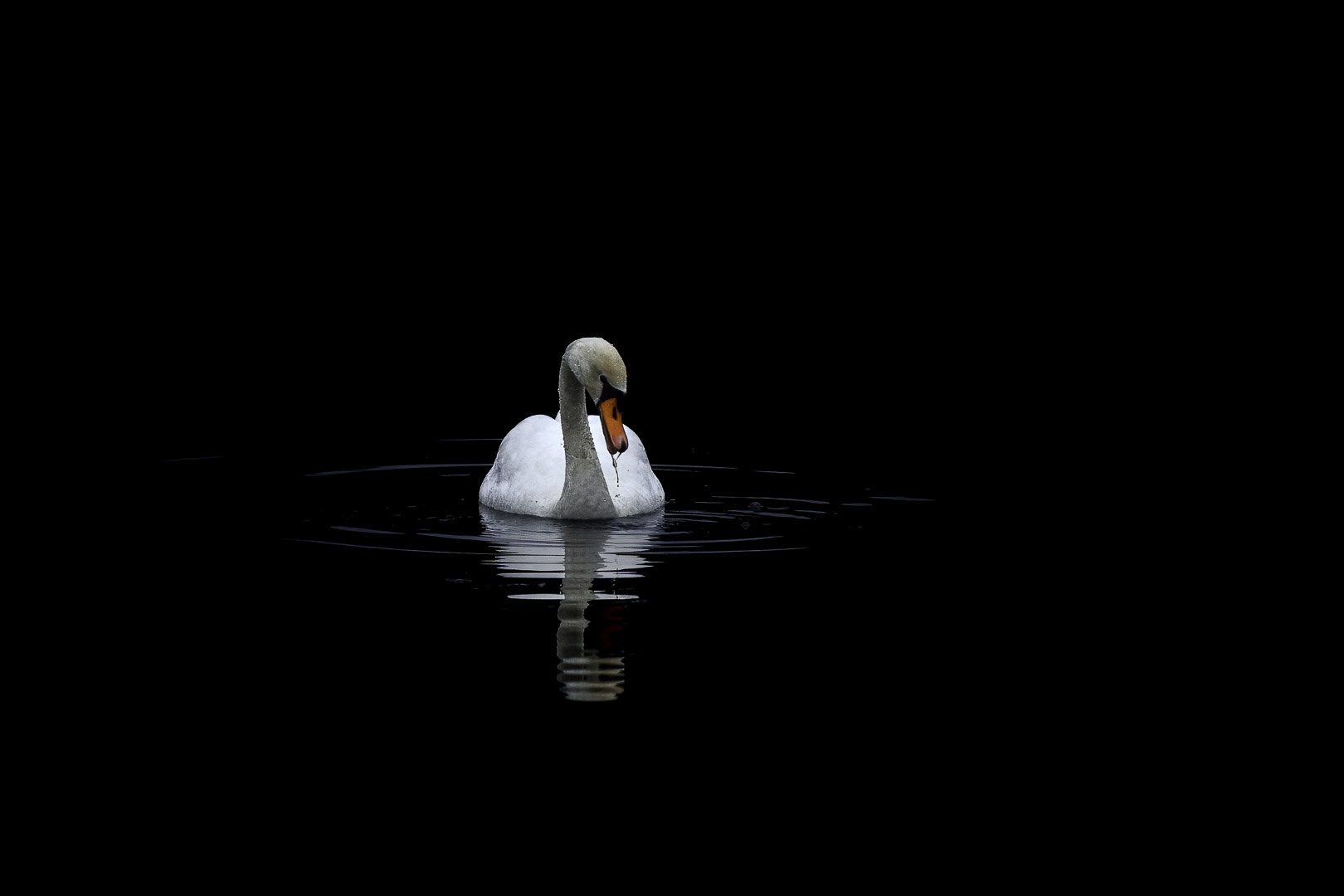
Mute swan (Cygnus olor)
The mute swan (Cygnus olor) belongs to the genus of swans (Cygnus) within the family of waterfowl (Anatidae) and the subfamily of geese (Anserinae). This bird species is semi-domesticated and widespread in Central Europe. It prefers lakes, park and fishponds, shallow bays, and open river courses in winter. The species is named after the black knob at the base of its bill. Swans have few natural predators in Central Europe, but mute swans are a huntable species in Germany, with several thousand shot every year. The strong territoriality of the swans during the breeding season and losses during severe winters contribute to the regulation of the population.
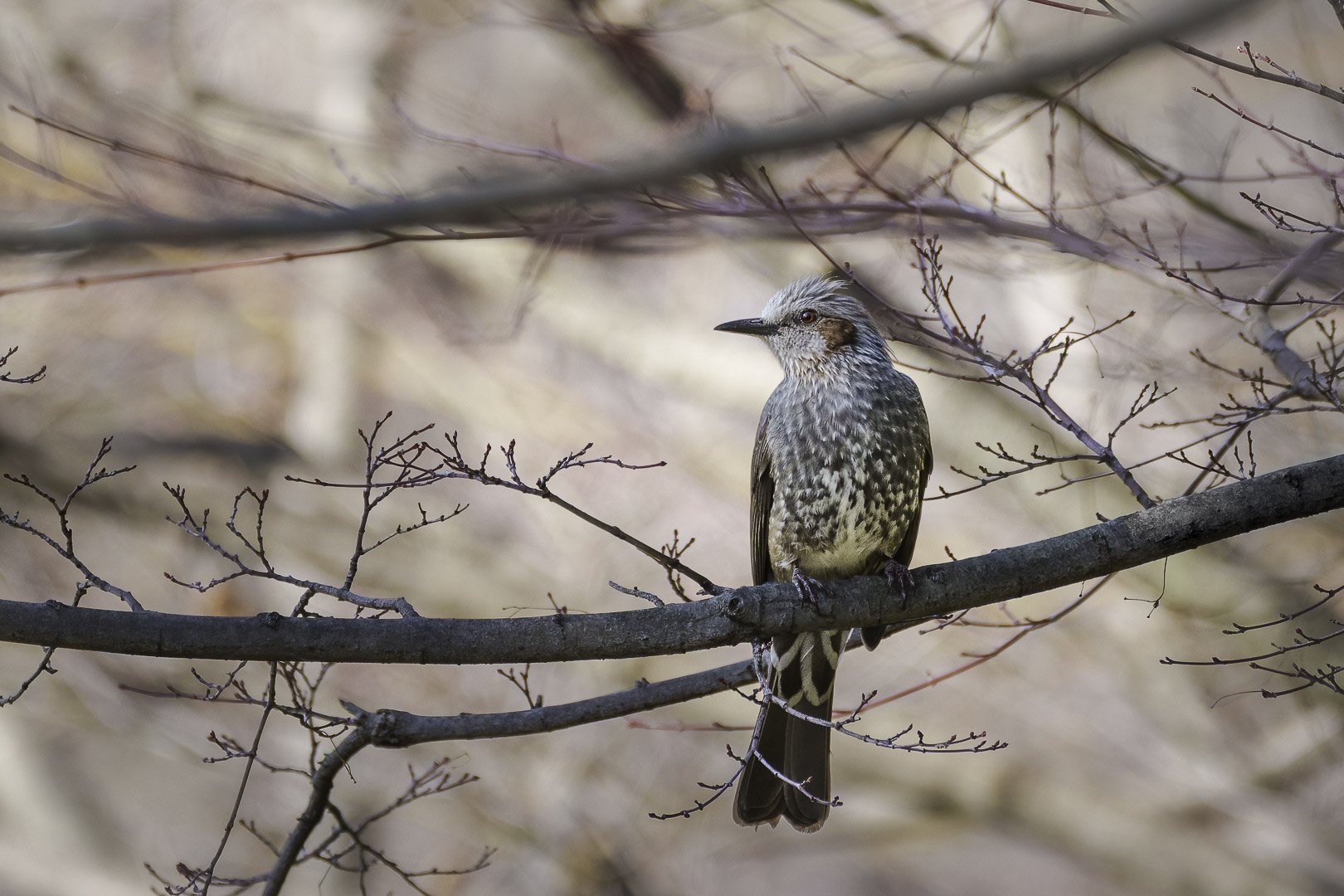
Brown-eared bulbul (Hypsipetes amaurotis)
The Orphean Bulbul (Hypsipetes amaurotis) is native to East Asia. It is extremely common within the northern part of its range and can be found from southern Sakhalin to the northern Philippines. Measuring about 28 cm in length, Orphean Bulbuls are gray-brown with brown cheeks and a long tail. Although they prefer wooded areas, they easily adapt to urban and rural environments, and their loud, squeaky calls are familiar in most areas of Japan.

Daurian redstart (Phoenicurus auroreus)
The Daurian redstart (Phoenicurus auroreus) is a small pas serine bird found in temperate Asia, known as "Jōbitaki" in Japan. The species was first described by Peter Simon Pallas in 1776. The Daurian redstart is approximately 14 to 15 cm long and weighs between 11 and 20 g. Like all redstarts, there is a strong sexual dimorphism. Males have a gray crown and neck with a light forehead
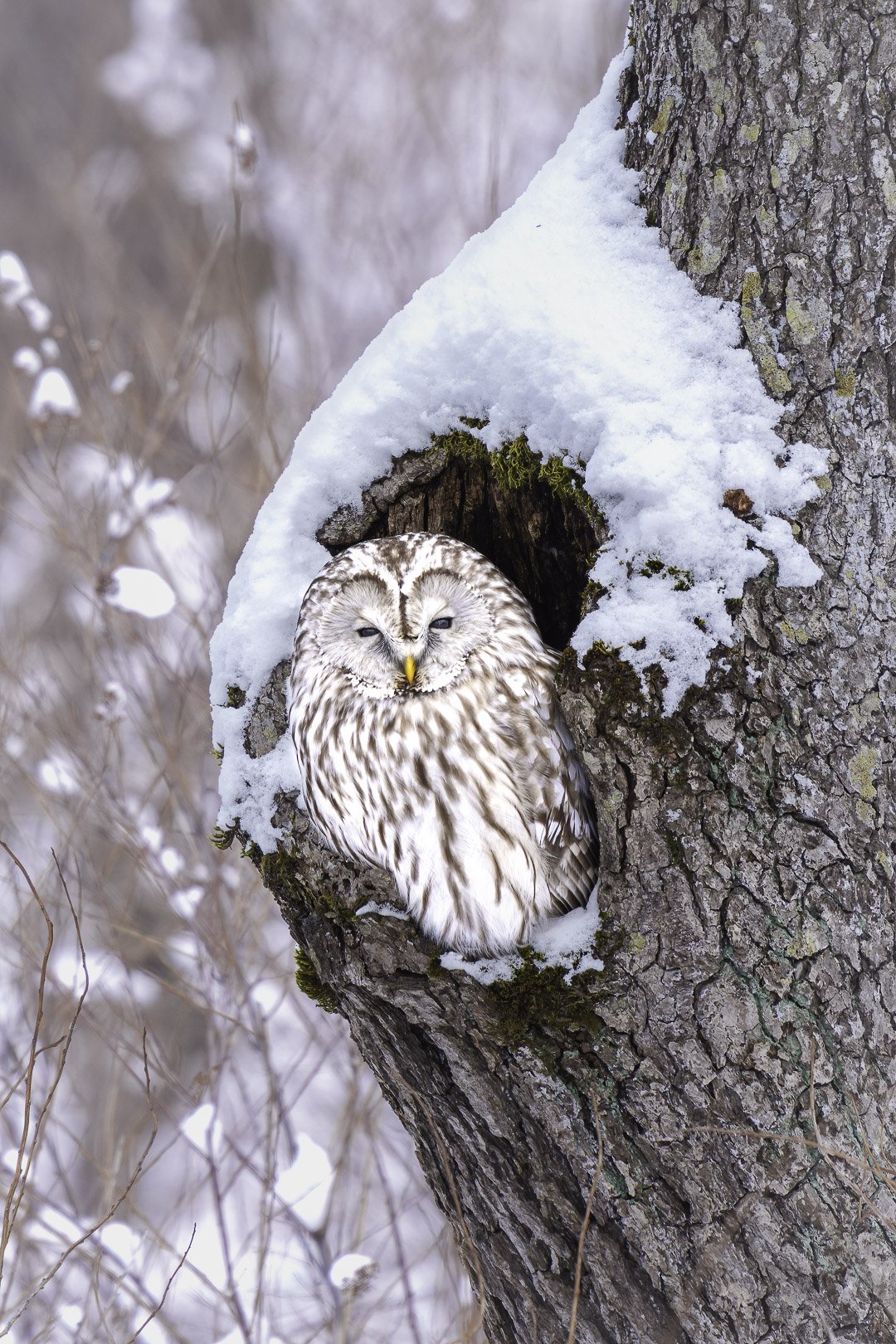
Ural Owl (japonica)
The Japanese Ural Owl (Strix uralensis japonica) is a subspecies of the Ural Owl and belongs to the family of owls, also known as EZO Owl. It is native to Japan and mainly inhabits mountain forests and deciduous forests at elevations of 500 to 2,500 meters. The Japanese owl species is a medium-sized owl with a body length of about 50 to 60 centimeters and
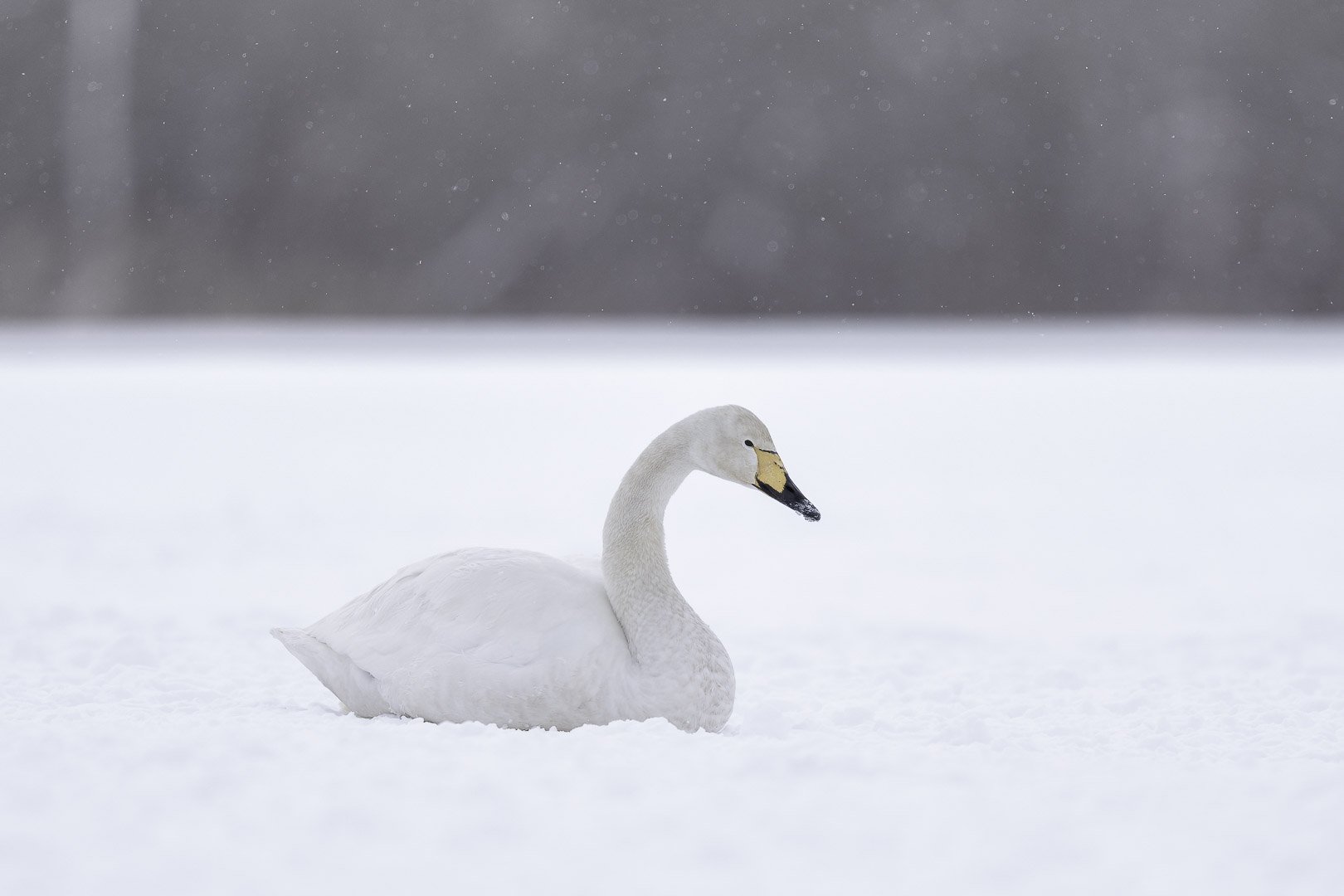
Whooper swan (Cygnus cygnus)
The Whooper swan (Cygnus cygnus) is a large waterbird species, with a wingspan of up to 2 meters and can weigh up to 12 kilograms. They have a long, slim neck and a graceful figure accentuated by their white plumage. Their bill and legs are black, and the base of the bill is yellow. They mainly breed in the Eastern European and Siberian taiga, but can also be observed in Central Europe
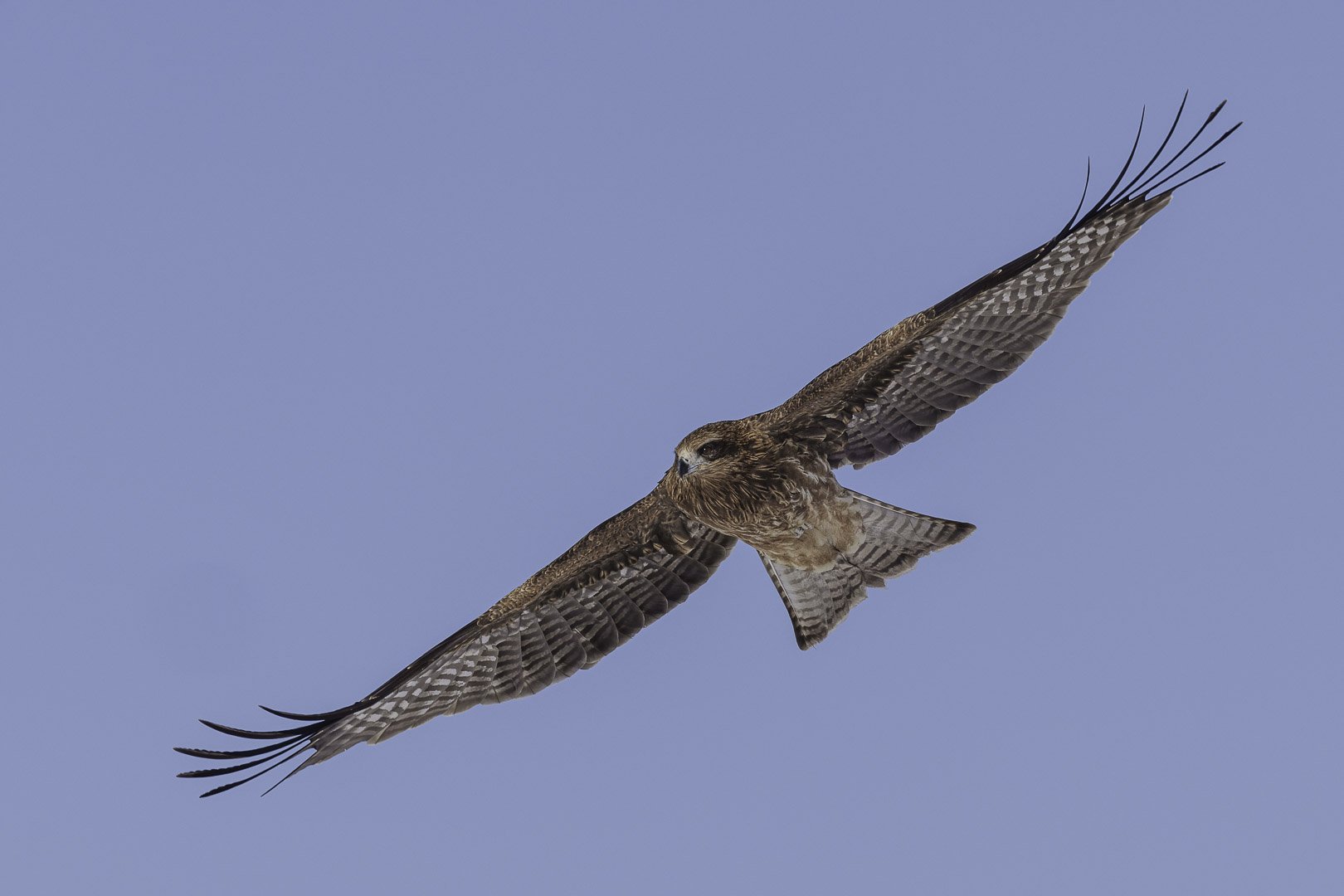
Black-eared Kite (Milvus migrans lineatus) Japan
The Black-eared Kite (Milvus migrans lineatus) is a subspecies of the Black Kite (Milvus migrans) that is found in various regions of Asia.
The Black-eared Kite is a medium-sized bird of prey, measuring about 45–55 centimeters in length with a wingspan of up to 150 centimeters. The distinguishing feature of this subspecies is the black patch of feathers on the sides of the head, located behind the eyes, which gives it its name. Its

Eurasian coot (Fulica atra)
The Eurasian coot belongs to the rail family (Rallidae) and has dark plumage. Its head and neck are dark gray to black, and the body appears dark brown to black. The bill is white, and the eyes are red. It prefers to live in still or slow-flowing bodies of water such as lakes, ponds, or riverbanks and feeds on aquatic plants, insects, mollusks, crustaceans, and small fish.
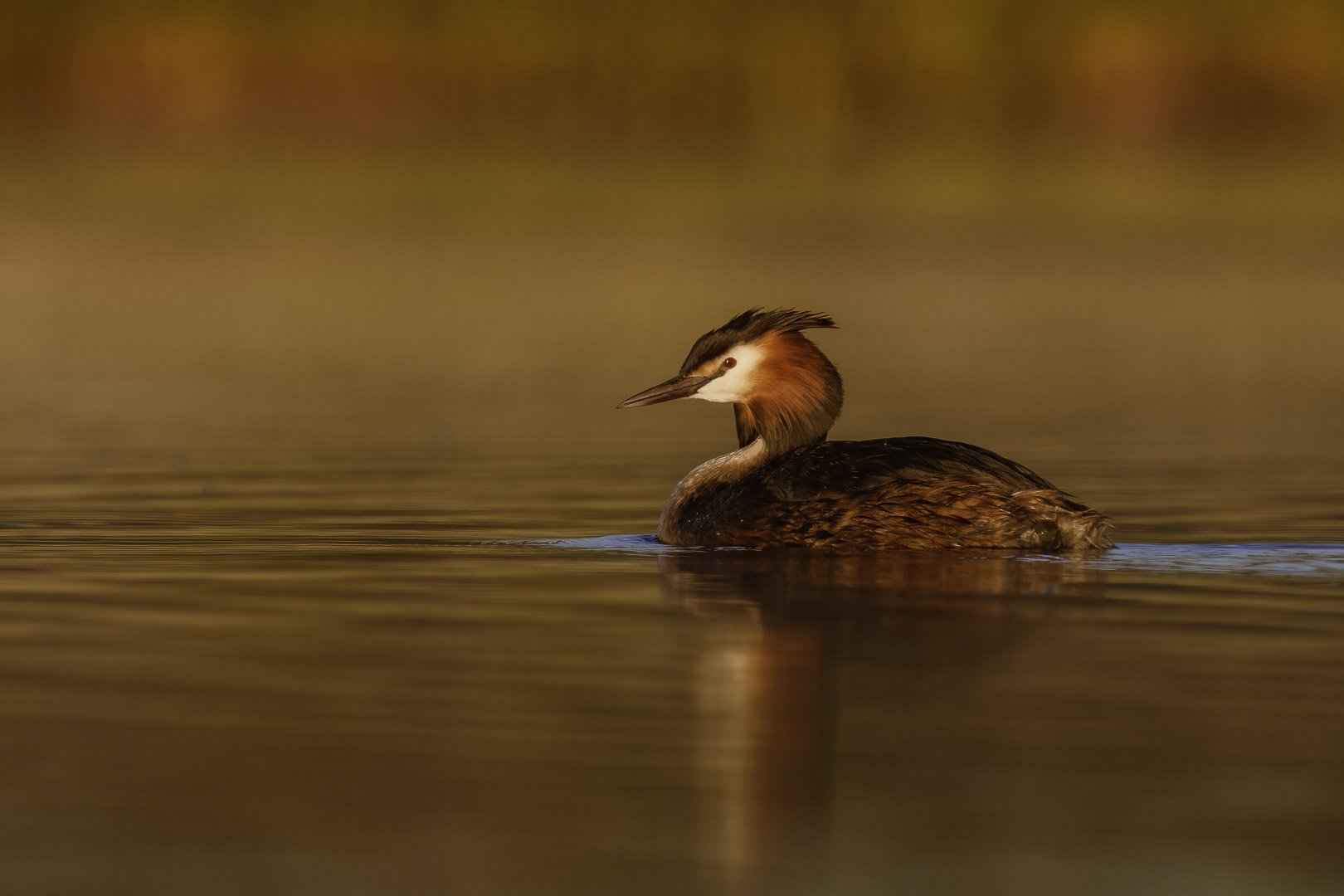
Great crested grebe (Podiceps cristatus)
The Great Crested Grebe (Podiceps cristatus) is a medium-sized waterbird that is native to Europe, Asia, and North Africa. It is a striking bird with a magnificent breeding plumage consisting of an orange throat patch, a black, and white head cap, and a black feather crest on the back of the head.
With a body length of 46 to 51 centimeters and a wingspan of 59 to 73 centimeters, the Great Crested Grebe has a compact body. The powerful, short legs are set far back on the body and have webbed feet.
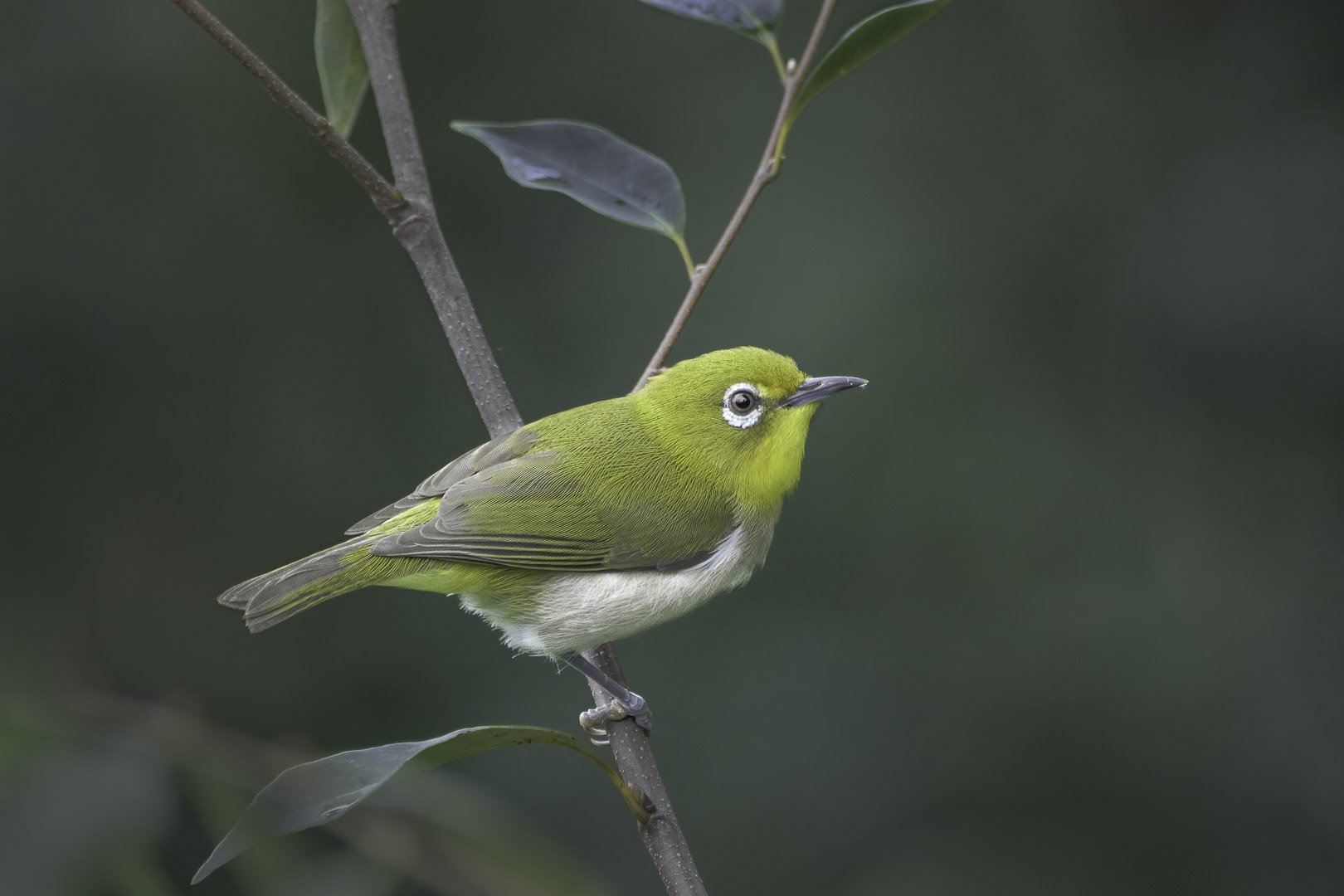
Warbling white-eye (Zosterops japonicus)
The Japanese White-eye (Zosterops japonicus) is a small, round bird that grows to be about 10 to 11 centimeters in size and weighs between 7 and 11 grams. It has a green or gray-green back and a white underside. The breast is pale gray, and the tail is short and slightly forked. The bird has a distinctive white eye-ring around its eye,
